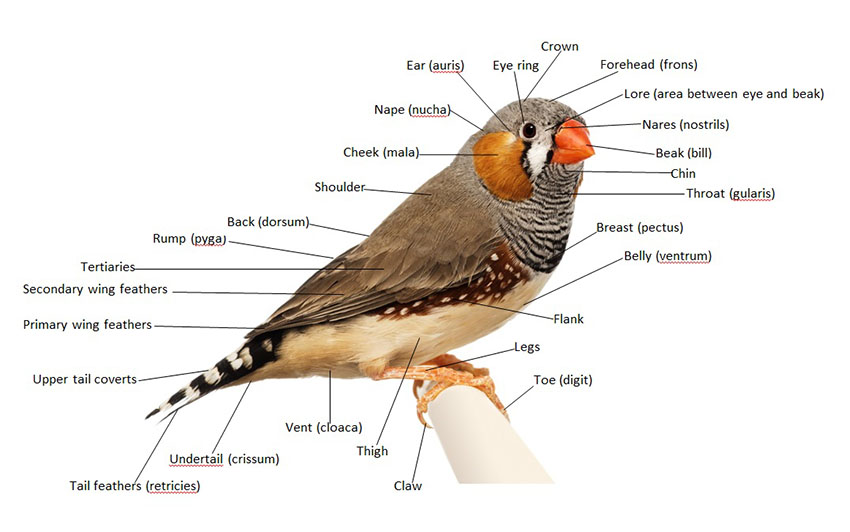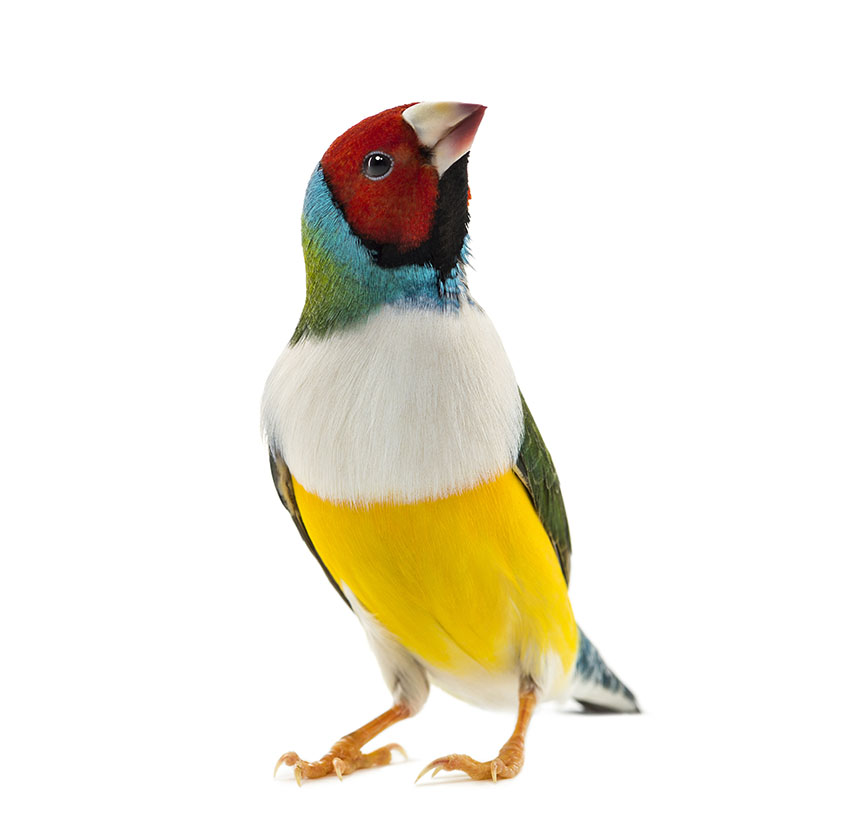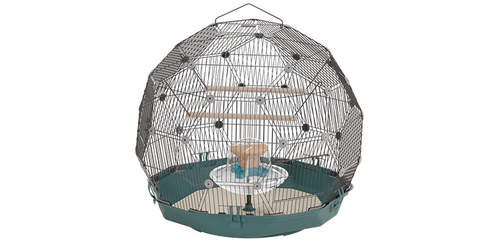Canaries, Zebra finches, and all the other commonly available pet finches share the same basic anatomical features.
The main differences between the various birds are not anatomical, but lie in the length and colour of different feathers. A Crested Canary, for example, sports a quiff on the crown, while frilled types have long curling feathers on the breast, flanks, shoulders, back and elsewhere. These are cosmetic differences rather than anatomical ones, and the illustration below still applies.

Know your finch - the various body parts
- The tail is for balance and steady flight. It also helps the flying bird change direction and acts as a brake when it wants to land.
- Tail and wing feathers need to be kept in top condition - in the wild they are the birds’ chief means of survival.
- Canaries and finches have four toes - three facing forwards and one facing backwards, giving a good grip on perches.
- Finch beaks are short, wedge-shaped and thick - the sign of a seed-eater. Songbirds that eat live, soft food have less powerful, more pointed beaks. Compare the beak of a robin with that of a finch for a good illustration of this.
Bird senses
Birds rely on their eyes and ears to make sense off the outside world. A bird in flight needs to take in a lot of visual information and process it, identifying danger, water, roosting sites, etc. They need good hearing to interact with their neighbours, and to interpret the various songs and calls of their fellow species and other birds. This is particularly vital in the nesting season, when a good song - or otherwise - is the starting point for reproduction.
The birds in this guide all have excellent colour vision. This helps them spot and select food; and nesting birds also respond to the colour of their fledglings’ open-mouthed ‘gape’. The sight of the bottomless pit of a chick’s hungry throat stimulates the parent’s instinct to keep the food coming. Canaries in particular are over-stimulated in this respect, responding to a red splodge (the pharyngeal spot) at the back of their young ones’ throats. The spot only becomes visible when the chick gapes.

The Gouldian Finch - he may have a big beak, but he's all eyes and ears
Finches’ sense of smell is poor, as is their sense of taste. This doesn’t stop them from having favourite ‘treats’ however, and they still need a lot of variety in their diets.




Comments
Kendall, 27 April 2020
I am new to this, so I want to learn. I have no chicks at the moment so I am ahead of myself. I have bought a feeding tube for finch chicks so I want to know how to fill the crop and not the lungs. 40 years ago when I was a farmer’s wife I had to learn how to tube lambs using trial and error so a few ended up with lungs full of milk. I want to learn the intelligent way this time. My plan is to learn how to successfully rear the most difficult breed of small birds I could afford so that I can hand rear more expensive birds for a business. I would like to see the anatomy of the ‘mouth’ to lungs and crop so I can avoid trial and error. Even with my inexperience, I have successfully reared 2 out of 3. Any help and advice you can give would be appreciated Kendall ????